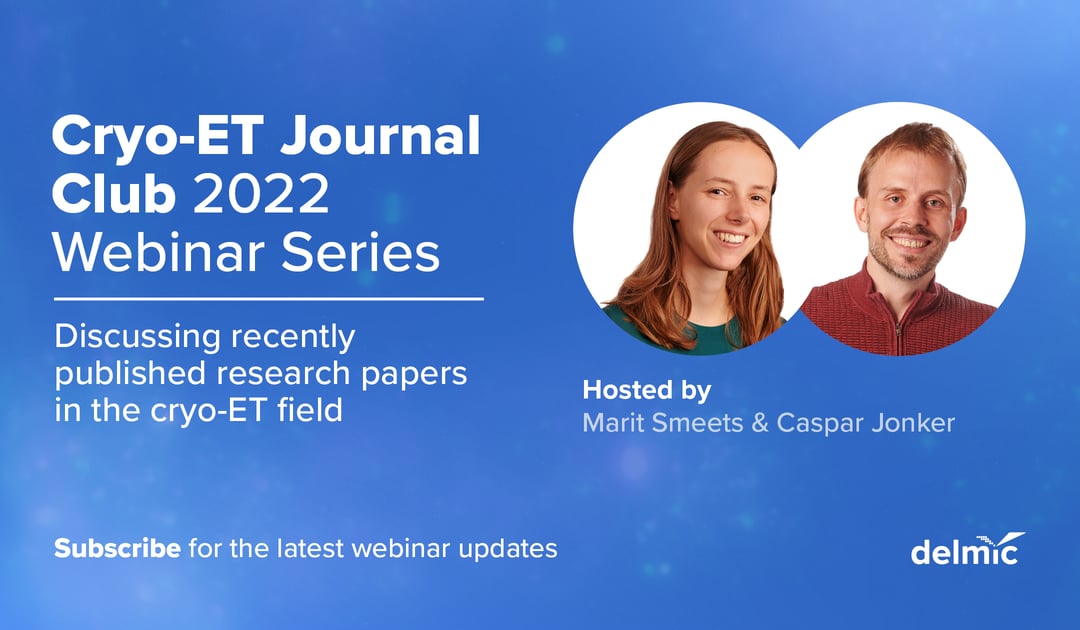Continuing the success of our 2020’s podcast-like webinar series, last year we released a new season with the aim to help you stay on top of the latest technological advances and exciting biological discoveries that employ the cryo-ET technique. By the end of 2021, five episodes were successfully hosted and there will be more fresh topics coming this year.
Here is a brief recap of 2020 and 2021 journal club episodes:
- Episode 1: In the first episode, our hosts Marit Smeets and Dr. Caspar Jonker shed some light on the Science Advances 2020 publication "Ribosome-associated vesicles: A dynamic subcompartment of the endoplasmic reticulum in secretory cells". The authors made excellent use of the diverse capabilities of the cryo-ET technique and obtained novel insight from these secretory cells. They observed ribosome-associated vesicles, which were hitherto unknown. This impressive discovery demonstrates the power of cryo-ET techniques for cell biology studies. Watch it here!
- Episode 2: Coronavirus remained a hot topic in 2021 and the whole research community was interested in resolving the structure of SARS-CoV-2 as well as delineating the coronavirus replication mechanism inside the infected cell. We discussed two very distinguished preprints, which described the structure and characterized the replication of coronaviruses using in situ cryo-ET:
1) A molecular pore spans the double membrane of the coronavirus replication organelle
2) SARS-CoV-2 structure and replication characterized by in situ cryo-electron tomography
Watch the episode here. - Episode 3: The episode was dedicated to the application of cryo-ET in understanding Parkinson’s disease. We discussed the article The In Situ Structure of Parkinson’s Disease-Linked LRRK2 and explained how using correlative light and electron microscopy, in situ cryo-ET, and subtomogram analysis resolved the LRRK2 protein with a resolution of 14 Å.
- Episode 4: In this episode, our hosts addressed the paper Preparing samples from whole cells using focused-ion-beam milling for cryo-electron tomography, explained the complex workflow in comparison to other work that had been carried out over time. We were lucky to have two of the authors, Reika Watanabe and Digvijay Singh, joining our Q&A session.
- Episode 5: Using cryo-ET, the authors of In situ architecture of neuronal α-Synuclein inclusions revealed the molecular architecture of α-Synuclein (α-Syn) at high resolution. Their finding brought new insight to the functioning of α-Syn, of which aggregation is a hallmark of several neurodegenerative diseases such as multiple systems atrophy and Parkinson’s Disease. Watch the episode here.
Would you like to participate in the next sessions? Sign up below and we will make sure to keep you updated on the upcoming topics of 2022! You can expect more paper reviews and discussions related to the latest applications of cryo-ET systems in different fields, ranging from virology to cell biology.
This work is supported by the European SME2 grant № 879673 - Cryo-SECOM Workflow
.png)








